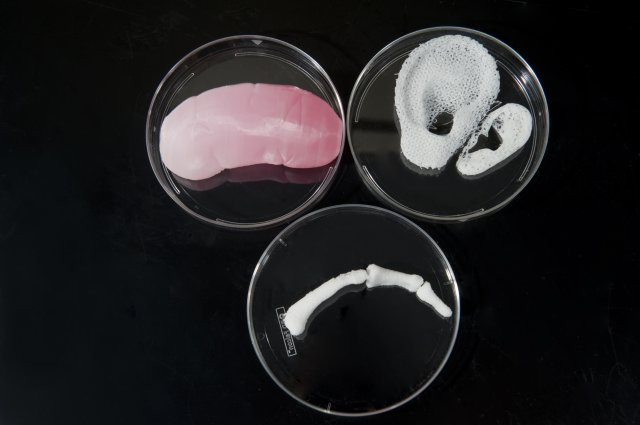3D Printers Could Regenerate Injured Soldiers

3D printers could change the future of the world in more than just medicine, as armed forces around the world look into how the technology could be used as a weapon of war.
At the Inside 3D Printing Conference in Melbourne, Australia this week, the Australian Army suggested that 3D printing would be of great help during a conflict.
Supply convoys are often targeted by roadside bombs, but if the soldiers were able to print items for themselves, the number of supply missions could be cut down.

"They should be able to print what they need on the ground so it can be serviceable within a matter of hours, not days," Australian Army Lieutenant Jacob Choi told the conference, according to Australian news channel ABC.
"You might have the light guys doing a lot of repair parts for rifles, armaments [and] vehicles. If you have a heavy unit able to print the most delicate parts, they might be able to print things up to the size of a Humvee or a Land Rover as well."
Australia's not the only one – the US army has been investing in 3D printing since 2012 for much the same reason.
However it is BAE Systems that has the most concrete plans for 3D printing in war.
The British defence and aerospace firm wants 3D printers to be installed aboard military aircraft, so that during a crisis, mission control could send the virtual blueprints for unmanned aerial vehicles (UAVs), i.e. flying helicopter drones to the plane.
The plane could print out the required drones, which could then be used for surveillance or to assist with rescue operations.
4D printing
But it doesn't stop there. The Australian army thinks that an even more futuristic technology currently being developed by the likes of MIT called "4D printing" could be of great use as a weapon of war.
If it works, 4D printing would enable people to programme different material properties into each of the particles of the designed item, utilising different water-absorbing materials, so that when the item is printed out using a 3D printer, it can essentially assemble itself.
In a way, it would be like the material learning to think for itself, exhibiting robotic-like behaviour, only without electronics.
This is still far away in the future yet, but if materials could be programmed to assemble themselves, then the world of manufacturing would change drastically.
Facial regenerative surgery
Of course, that's not to say that medicine is completely out of the question.
The US military's Armed Forces Institute of Regenerative Medicine (AFIRM), was started in 2008 and is made up of over 30 different groups of researchers.

AFIRM is trying to find a way to treat military personnel who come back from duty with disfiguring and disabling injuries, which often cause lifelong impairment.
One of its studies, entitled "3D Printed Biomaterials for Maxillofacial Tissue Engineering and Reconstruction – A Review", has found that 3D bioprinting technology can be used successfully for maxillofacial tissue engineering, in particular to print out skin cells, precise scaffolds and prosthodontics that can be used in regenerative surgery.
© Copyright IBTimes 2025. All rights reserved.






















